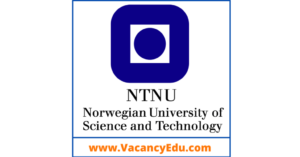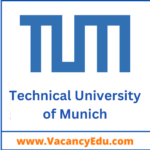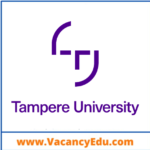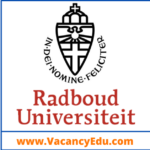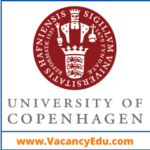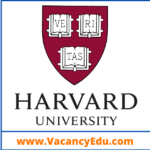NTNU, Norway invites online Application for various Postdoctoral Fellowship in their different Departments. We are providing a list of Postdoc Fellowship positions available at NTNU, Norway.
Eligible candidate may Apply as soon as possible.
(01) Postdoctoral Fellowship Position
Postdoc Fellowship Position summary/title: Postdoctoral Fellow in Entity Identity Matching
The postdoctoral fellowship position is a temporary position where the main goal is to qualify for work in senior academic positions.
The goal of the IAMI (Identity Attributes Matrix Initiative) project is to identify individuals or organizations over various platforms based on a variety of multi-modal, identity related attributes that will vary in completeness and correctness. The main task of NTNU/IIK in this project is in the system development of the IAMI entity identification and resolution subsystem and its AI powered processes and workflows.
Deadline : 20th November 2024
(02) Postdoctoral Fellowship Position
Postdoc summary/title: Postdoctoral Fellow in Cybersecurity of Safety Instrumented Systems (SIS)
The postdoctoral fellowship position is a temporary position where the main goal is to qualify for work in senior academic positions.
A safety instrumented system (SIS) is a protection layer that shuts down a chemical, nuclear, electrical, or mechanical system, or part of it, if a hazardous condition is detected. For example, a process upset that is not managed by the distributed control system (DCS) or a pipe rupture are examples of events managed by the SIS. A SIS is composed of dedicated sensors, logic solvers, and final control elements (e.g., valves, relays, actuators) which are all designed fail-safe, to ensure that the SIS is able enter a safe state even upon certain fault conditions. Examples of SIS include Emergency Shutdown Systems, Emergency Venting systems, Process shutdown Systems and High-integrity Pressure Protection systems. The consequences of SIS failure can, in the worst case, be a major accident involving losses of people and damages to the environment and infrastructures.
A SIS is expected to operate independently of other systems, e.g., that a failure of the DCS system should have no negative impact on the ability of the SIS to perform as required. However, SIS systems are usually connected to the same operational technology (OT) network as systems used for control, like the DCS. The OT network may also be accessed from the outside, via the companies’ IT network and the use of secured zones for authorization, restrictions on data flow, and encryption.
The design and operation of SIS is based on regulatory requirements and framed by standards on functional safety, such as IEC 61508, IEC 61511, and IEC 62061/ISO 13849. The focus of these standards is on safety integrity, meaning the ability to perform in response to random and non-deliberate events that can arise during operation and maintenance. However, SIS devices are relying on commercial off the shelf components, and the safety certification is not necessarily providing technical solutions that are resistant to cyber-attack. For example, the Triton/Trisis attack in 2017, has shown the willingness of advanced attackers to attack SIS systems where the outcome could have been, if successful, a complete disaster at the plant. The attackers were able to create a bypass of the key switch whose position could have prevented unauthorized downloading of code to the controllers.
Industry has developed several standards applicable for distributed control and safety systems in response to the increasing risks of attack to industrial control and safety systems, like DCS and SIS. Some are general for all systems within OT networks, like IEC 62443 and NIST framework for cybersecurity, while others are specific for SIS, like ISA 84.00.09. Despite this effort, the SIS systems are exposed to many threats and experiencing new vulnerabilities, as the capabilities of the threat actors are developing.
The position creates an opportunity for more collaboration with other research disciplines such as security management, safety engineering, and policymaking in addition to the focus areas mentioned above.
The research will be carried out within the context of SFI NORCICS, the research-based innovation Norwegian Center for Cybersecurity in Critical Sectors. These sectors include electricity production and distribution, oil & gas production and distribution, manufacturing, healthcare, industrial production, smart districts. NORCICS follows a holistic, comprehensive and systemic approach addressing people, processes and technology to protect critical sectors throughout the cybersecurity core functions (identify, protect, detect, respond, recover). NORCICS has partners from academia, research, the public sector, and the industry.
Deadline : 20th November 2024
Looking for more Postdoctoral Positions Click Here
(03) Postdoctoral Fellowship Position
Postdoc Fellowship Position summary/title: Researcher in Degradation in Solid Insulation Systems under Power Electronics Converter Stresses
The Department of Electric Energy (IEL) at NTNU has a vacancy for a full-time 100% position as a Researcher within the field of degradation and breakdown in solid insulation systems under power electronics converter stresses.
During the last decades power electronic converters (PECs) have been introduced to control and transform electric power – and permeate society for numerous applications: zero-emission transport, renewable energy, and transmission. The PEC is a key technology to succeed with electrification of society and reach the climate goals set out by EU and UN.
PECs function as on/off switches, resulting in sharp-edged square wave voltages with high repetition rate. These sharp voltage flanks introduce different stress distributions internally in components and can induce or accelerate degradation and lead to premature breakdown. The SwoP (Impact of switched voltage waveforms on power components and grids) project will develop methods to measure, characterize and predict the increased stresses and accelerated degradation on power components exposed to fast PECs. Failure modes in electrical insulation will typically be partial discharges (PD), i.e., small local sparks that degrade insulation, and dielectric heating. PD measurements are feasible for quality assurance and factory assessment testing, as it identifies potential defects. However, there is no good documentation of correlation between PD level and life expectancy. Performing ageing studies along with diagnostics (e.g., PD and dielectric spectroscopy) gives insight in the relevance and information that could be derived from PD measurement. This should be combined with analysis of the mechanical and chemical material deterioration that leads to decreased electric withstand strength. To manufacture novel and lightweight insulation systems for electric propulsion and renewable energy generation, knowledge is thus needed on degradation mechanisms and suitable insulation materials under PEC stresses.
The work of this project will be associated with the project SwoP, which is a collaborative project involving NTNU, SINTEF Energy Research, University of Bologna (UniBo) and several national and international industry partners. The Researcher will be employed at NTNU, and the workplace will be in Trondheim, in connection with this research project, with exchange to the University of Bologna for one year. The prospective candidate will be part of a project team that works in close collaboration with SINTEF, UniBo and industry partners.
Deadline : 18th November 2024
(04) Postdoctoral Fellowship Position
Postdoc Fellowship Position summary/title: Postdoctoral Fellow in offshore wind farm wake modelling
The postdoctoral fellowship position is a temporary position where the main goal is to qualify for work in senior academic positions.
There are ambitious plans for offshore wind in the North Sea and Norwegian Sea in the coming years. Wake dynamics from multiple large floating wind farms offshore are complex and their interactions with the atmospheric boundary layer are not completely understood. While wind energy companies depend on strong winds to maximize energy production, the use of wind energy is a fundamental component of seabird ecology with many species relying on winds to conserve energy during flight while foraging at sea. The energy expenditure of seabirds depends on both the effect of turbine wakes on wind velocities at different heights as well as their impact on air temperature and how this might modify thermal updrafts over the sea. The BIRDWAKE project is an exciting opportunity to work with high-fidelity simulations of wind turbine wakes considering different wind farm and turbine designs in collaboration with scientists modelling seabird flight dynamics at NINA (Norwegian Institute for Nature Research). Your place of work will be at the new Norwegian Ocean Technology Center.
Deadline : 15th November 2024
(05) Postdoctoral Fellowship Position
Postdoc Fellowship Position summary/title: Postdoctoral Fellow in Organizational use of Artificial Intelligence (AI)
The postdoctoral fellowship position is a temporary position where the main goal is to qualify for work in senior academic positions.
We offer a 3- year or 4-year post-doctoral position (without or with teaching duties) at the Information Systems and Software Engineering (ISSE) group of the Department of Computer Science, NTNU. This position focuses on exploring the organizational use and deployment of Artificial Intelligence (AI), as well as understanding how organizations leverage AI to drive value creation. While there has been widespread enthusiasm regarding AI, adopting and strategically utilizing these technologies constitutes a significant challenge for many organizations. Furthermore, there is limited understanding of how the use of technologies such as AI can drive business strategies and generate sustained value. While most research to date has investigated technical aspects related to AI, there is a growing need to understand how business strategies can be developed to harness the strengths of these novel technologies. In addition, there is a lack of understanding concerning the challenges and obstacles faced by organizations of different types and in various industries.
The ideal candidate will be able to approach this topic from an Information Systems perspective and examine the broader socio-technical implications that AI introduces to the workplace and the implications of leveraging AI in the organizational setting. To do so, a combination of both quantitative and qualitative research methods will be employed through appropriate theoretical lenses of information systems and strategic management research. This project aims to understand how organizations should adopt, deploy, and routinize AI technologies and uncover value-generating mechanisms and their links with organizational strategy. We are seeking candidates with a strong research perspective who can publish their work in leading academic journals and conference proceedings.
Deadline : 14th November 2024
Click here for “Postdoc Application Cover Letter Template”
Click here to know “How to write a Postdoc Job Application or Email”
(06) Postdoctoral Fellowship Position
Postdoc Fellowship Position summary/title: Researcher in modelling land-based CDR using NorESM
We have a vacancy for a temporary Researcher position (20 months) to conduct Earth System Modeling in the topic of land-based Carbon Dioxide Removal (CDR) using the Norwegian Earth System Model.
The position will be part of the Horizon Europe project RESCUE, which comprises a large model intercomparison project to quantify the Earth system response to pathways achieving climate neutrality by CDR deployment. A special focus lies on Earth system feedbacks and aspects of reversibility and environmental risks under scenarios of temperature overshoot. The position will involve conduct simulations with the Norwegian Earth System Model, NorESM, perform analysis of multiple models, with a focus on the carbon cycle and the effects of afforestation and bioenergy with carbon capture and storage. The position offers the chance to be part of a dynamic team working at the frontier of Earth system science. The team is strongly involved in large international collaborations such as CMIP and IPCC.
Your immediate leader is Associate Professor Hanna Lee at the Department of Biology and Research Professor Helene Muri at the Department of Energy and Process Engineering.
Deadline : 8th November 2024
(07) Postdoctoral Fellowship Position
Postdoc Fellowship Position summary/title: A Researcher in Plant Cell and Stress Biology
One Researcher position, funded for two years, is available in the Hamann research group in the ERC SYNERGY project HYDROSENSING at the Department of Biology in Trondheim (tentative starting date: 03/2025). The project aims to determine how plants perceive drought stress and will involve close collaborations with three other research groups in Germany, Israel and the United Kingdom. In the context of the SYNERGY project the scientist to be employed will focus on the functional characterisation of candidate gens and investigate the cellular processes enabling plants to perceive water. This work will involve biochemical, molecular and microscopy methods such as Brillouin microscopy, molecular rotors and custom biosensors. Further information about the research areas of the groups involved in the SYNERGY project can be found in the following publications: Hu et al., Nature Plants 2023; Mehra et al., Science 2022; Bacete et al., PNAS 2021; Vaahtera et al., Nature Plants 2019.
The newly hired Researcher will join an international research group with members coming from seven different countries on three continents. The Hamann research group is part of the multiscale biology section, which consists of six research groups. The section performs research on different levels of biological organization ranging from the molecular to the ecosystem level to understand how molecular processes influence events taking place on the ecosystem level.
Deadline : 7th November 2024
About NTNU- Norwegian University of Science and Technology, Norway- Official Website
The Norwegian University of Science and Technology is a public research university in Norway with the main campus in Trondheim and smaller campuses in Gjøvik and Ålesund. The largest university in Norway, NTNU has over 8,000 employees and over 40,000 students. NTNU in its current form was established by the King-in-Council in 1996 by the merger of the former University of Trondheim and other university-level institutions, with roots dating back to 1760, and has later also incorporated some former university colleges. NTNU is consistently ranked in the top one percentage among the world’s universities, usually in the 101–500 range depending on ranking.
NTNU has the main national responsibility for education and research in engineering and technology, and is the successor of Norway’s preeminent engineering university, the Norwegian Institute of Technology (NTH), established by Parliament in 1910 as Norway’s national engineering university. In addition to engineering and natural sciences, the university offers higher education in other academic disciplines ranging from medicine, psychology, social sciences, the arts, teacher education, architecture and fine art. NTNU is well known for its close collaboration with industry, and particularly with its R&D partner SINTEF, which provided it with the biggest industrial link among all the technical universities in the world. The university’s academics include three Nobel laureates in medicine, Edvard Moser, May-Britt Moser and John O’Keefe.
Disclaimer: We try to ensure that the information we post on VacancyEdu.com is accurate. However, despite our best efforts, some of the content may contain errors. You can trust us, but please conduct your own checks too.
Related Posts
- 11 Postdoctoral Fellowship at Technical University of Munich, Germany

- 04 Postdoctoral Fellowship at Tampere University, Finland

- 06 Postdoctoral Fellowship at University of Bern, Switzerland

- 04 Postdoctoral Fellowship at Utrecht University, Netherlands

- 34 Postdoctoral Fellowship at University of Luxembourg, Luxembourg

- Postdoctoral Fellowship (05) at Radboud University, Nijmegen, Netherlands

- Postdoctoral Fellowship (26) at University of Copenhagen, Denmark

- 03 Postdoctoral Fellowship at Durham University, England

- 30 Postdoctoral Fellowship at Harvard University, United States


